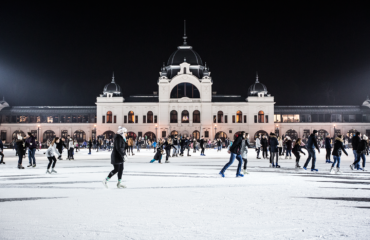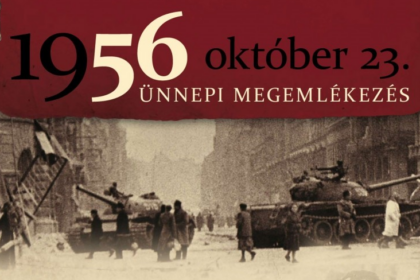
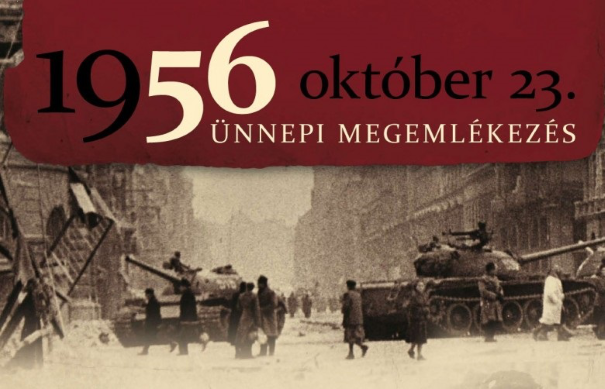
Picture: Hunyadi János Német Nemzetiségi Általános Iskola
On the 23rd of October Hungary remembers the heroic efforts of those who dared to oppose the tyranny of the Soviet Regime. In this entry we would like to provide some background on how this revolution started and what were the consequences afterwards. After a detailed short introduction, we also would like to recommend you several sights within the city were you can learn more about the cold war behind the iron curtain.
The Hungarian Uprising of 1956, also known as the Hungarian Revolution, was a pivotal event in Hungary’s history and a significant episode of the Cold War. This uprising was a spontaneous and widespread revolt against the oppressive communist regime led by the Soviet Union.
Background: In the aftermath of World War II, Hungary found itself under Soviet influence. The Soviet Red Army liberated Hungary from Nazi occupation in 1945 and subsequently established a communist government in the country. The Hungarian Communist Party, led by Mátyás Rákosi, took control of Hungary and began implementing harsh Stalinist policies, including political purges, censorship, and forced collectivization. In addition to back those changes a secret police force was also established.
The desperate, struggling citizens thought that the radical changes were only temporary and were helping the nation to “stand up” from the war struck era. Sadly, the Warsaw pact in 1955 sealed the fate of all the nations in the Eastern Block, making it clear that the changes will be permanent, and the worst was still yet to come…
The Uprising: By the early 1950s, discontent with the oppressive regime was growing among Hungarians. They were dissatisfied with economic hardships, food shortages, and the lack of political freedoms. The turning point came in 1956 when Polish workers’ protests inspired Hungarian students to stage a demonstration in Budapest on October 23rd.
The initial protest was peaceful, with students demanding political reforms and freedom of speech. However, the situation escalated when the Hungarian Secret Police opened fire on the demonstrators, killing several. This brutal response ignited widespread anger and led to a full-scale uprising.
Over the next few days, spontaneous protests evolved into a nationwide revolt. Hungarians from all walks of life, including workers, intellectuals, and soldiers, joined forces to challenge Soviet rule. They formed local councils to assert their autonomy and elected Imre Nagy, a reformist communist, as their leader.
Soviet Response: The Soviet Union, under the leadership of Nikita Khrushchev, responded swiftly and brutally. In early November, Soviet tanks rolled into Budapest and other Hungarian cities, marking the beginning of a military intervention to crush the uprising. The Soviet forces engaged in fierce urban warfare, shelling Budapest, and suppressing the rebellion with force.
Imre Nagy’s government declared Hungary’s withdrawal from the Warsaw Pact, hoping to gain international support. However, Western powers did not intervene, and the Hungarian revolutionaries were left to fend for themselves.
Aftermath:By late November 1956, Soviet forces had retaken control of Hungary. Imre Nagy and other key figures of the uprising were arrested. Nagy was later tried and executed, becoming a symbol of the Hungarian struggle for freedom.
The Aftermath: of the revolution was grim. Thousands of Hungarians were killed, and many more were imprisoned or forced into exile. The Soviet-backed János Kádár regime was established, which imposed even stricter control on Hungary for decades.
Despite the brutal suppression of the uprising, the Hungarian Revolution of 1956 had a lasting impact. It exposed the brutality of Soviet rule and the desire for freedom among Eastern European nations. It also contributed to the eventual “thawing” of the Cold War and Hungary’s transition to democracy in the late 1980s and early 1990s. The memory of the 1956 uprising remains an essential part of Hungary’s national identity and its struggle for independence.
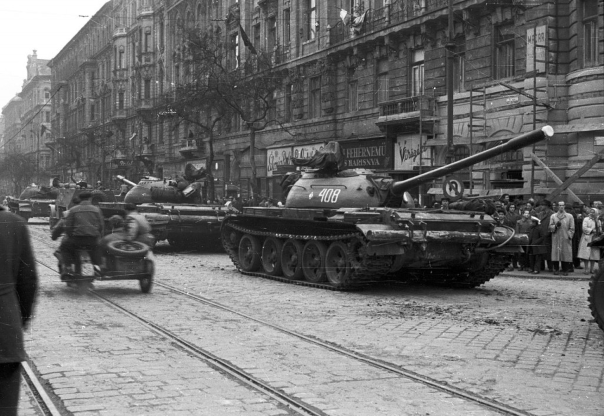
Picture source: revuedesdeuxmondes.fr
Recommended sights to visit to learn more about the revolution:
In Memoriam 1956 – exhibition hall
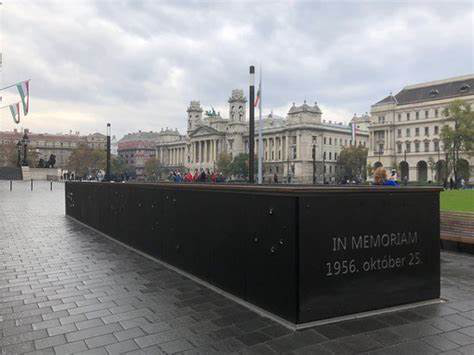
Photo: tripadvisor
The In Memoriam 1956 Exhibition, located near the Hungarian Parliament is an informative tribute to the Hungarian Revolution of 1956. Within the exhibition, visitors will find a collection of historical artifacts, photographs, and documents that chronicle the events and heroes of the 1956 Revolution. The exhibits provide an in-depth look at the struggles, sacrifices, and aspirations of those who took part in this significant moment in Hungarian history. The stirring displays pay homage to the fallen and honor the courage of all who fought for their homeland.
Corvin quarters
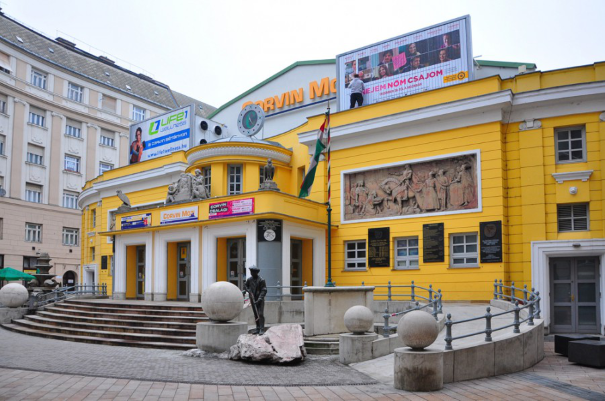
Photo: filmvilag.blog
The Corvin Quarters in Budapest is a historic area with deep ties to the Hungarian Revolution of 1956. It was one of the central battlegrounds during the revolution, serving as a stronghold for the Hungarian freedom fighters who were seeking to break free from Soviet influence and communist oppression. The Kilian Barracks, located within this district, played a pivotal role during those fateful days. At the entrance of the still operating Corvin Cinema you can spot the statue of a little boy holding a rifle, representing the youth’s contribution to the uprising. Named “Pesti srác” –
Memorial of the 56’s
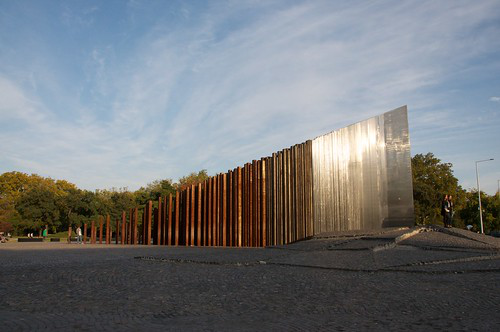
Photo: flickr
The ’56 Memorial near Heroes Square and City Park in Budapest is a solemn and moving tribute to the Hungarian Revolution of 1956. This monument, unveiled on the 50th anniversary of the revolution, stands as a symbol of the country’s resilience and determination in the face of adversity. The centrepiece of the memorial is a towering, rust-coloured column adorned with a contemporary interpretation of the Hungarian flag, which was originally created by the revolutionaries. At the base of the column, one can find the names of those who lost their lives during the uprising.
Imre Nagy statue
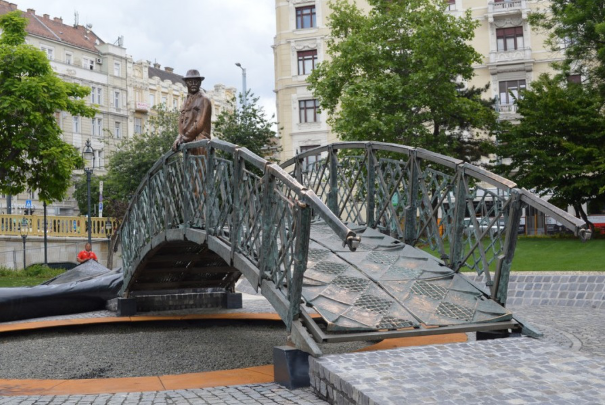
Photo: infostart.hu
This statue commemorates Nagy’s leadership during the ‘56 revolution and his unwavering commitment to the principles of justice and liberty. The Imre Nagy Statue serves as a reminder of the nation’s enduring quest for independence and self-determination, making it an important and poignant landmark in Budapest’s historical landscape. Visitors can pay their respects to this iconic figure while reflecting on Hungary’s tumultuous past and its continuing journey towards democracy. Removed from the Parliament, currently allocated at the foot of Margaret Bridge on the Pest side.
Statue Park – Memento Park
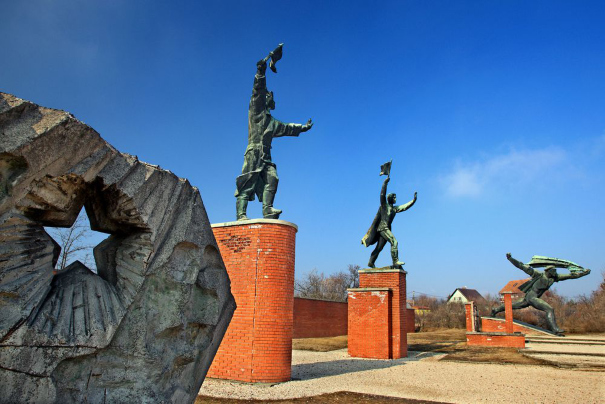
Photo: marcopolo.de
Statue Park, also known as Memento Park, in Budapest is a unique open-air museum that offers visitors a glimpse into Hungary’s communist past. Located just outside the city, this park is home to a fascinating collection of statues and monuments that were once scattered throughout Budapest during the communist era. These monumental relics, featuring prominent figures like Lenin, Marx, and other socialist icons, have found a new home in this park. It provides an educational and thought-provoking experience, allowing you to explore the remnants of Hungary’s communist history in a peaceful and reflective setting. Statue Park is a must-visit destination for those interested in the country’s historical and political heritage.
Budapest Retro Centre
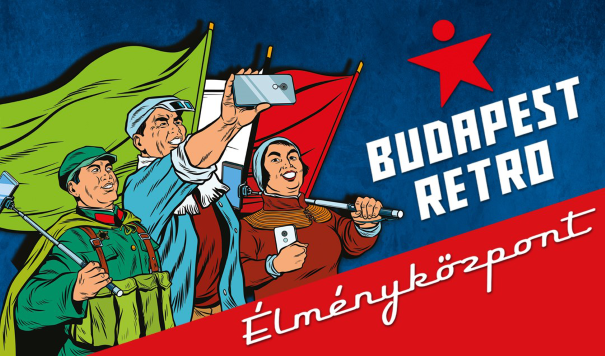
Picture: Budapest Retro
The next entry is a bit more light-hearted compared to the other recommendations. If you wish to peek behind the former iron curtain and want to learn more about the everyday life of the cold war socialistic era of Hungary, this museum is for you. The Budapest Retro Centrum Museum is a nostalgic journey through Hungary’s recent past, with a particular focus on the communist era. This unique museum is a time capsule that immerses visitors in the everyday life, culture, and history of Hungary during the socialist regime. With a diverse collection of memorabilia, vintage items, and retro artifacts, the museum recreates the atmosphere of the communist period, providing a glimpse into the daily lives of Hungarians during those decades. From vintage cars to period advertisements, the Budapest Retro Centrum captures the essence of the times and offers a fascinating and engaging experience for visitors interested in the country’s history and culture. It’s a must-visit destination for those looking to step back in time and explore Hungary’s recent past.
House of Terror
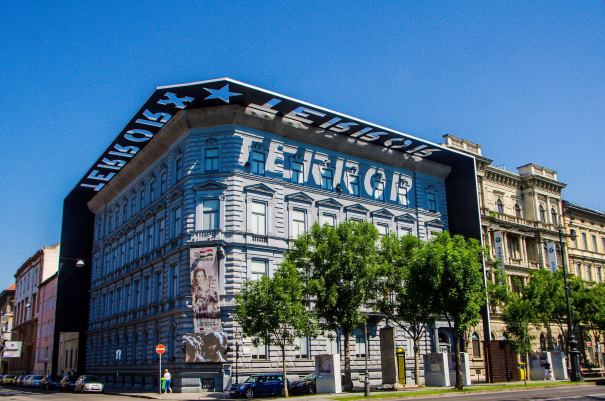
Photo: szállás.hu
This building was the base of operation for the ultra-right wing Arrow Cross Party during the Second World War. After they made a coup d état In this building thousands of Jewish people were sentenced to labour camps and concentration camps. After the Soviet liberation however the building found new owners…
Stalin’s most loyal followers cynically chose the abandoned Arrow Cross Party headquarters to determine not by race but by class who should be considered guilty, who should suffer, and perish. The authorities, operating with different names but the same purpose, were only forced to leave the building after the Hungarian Revolution and Uprising of 1956. By then, every stone of the building had absorbed so much human suffering that it became impossible to repurpose the dreaded Andrássy Avenue 60. The museum and exhibition established in the building thus became the most powerful symbol of Hungarian democracy after the regime change.
Former Kilian Barracks
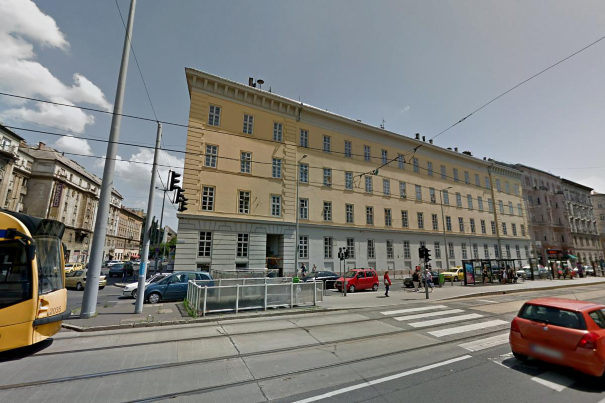
Photo: Google street view
The Kilian Barracks served as a strategic location for the revolutionaries, who used it as a base for their resistance efforts. The barracks were heavily contested, and fierce battles took place here. The freedom fighters defended the Kilian Barracks against the overwhelming Soviet forces, displaying immense courage and determination.
![]()
![]()
![]()

 Skip the Line – Parliament Panorama Cruise
Skip the Line – Parliament Panorama Cruise Christmas Market Cruise
Christmas Market Cruise Drink & Piano Show
Drink & Piano Show Unlimited Booze Cruise Downtown Budapest
Unlimited Booze Cruise Downtown Budapest Budapest New Year’s Eve Midnight Booze Cruise
Budapest New Year’s Eve Midnight Booze Cruise Halloween Cruise
Halloween Cruise










